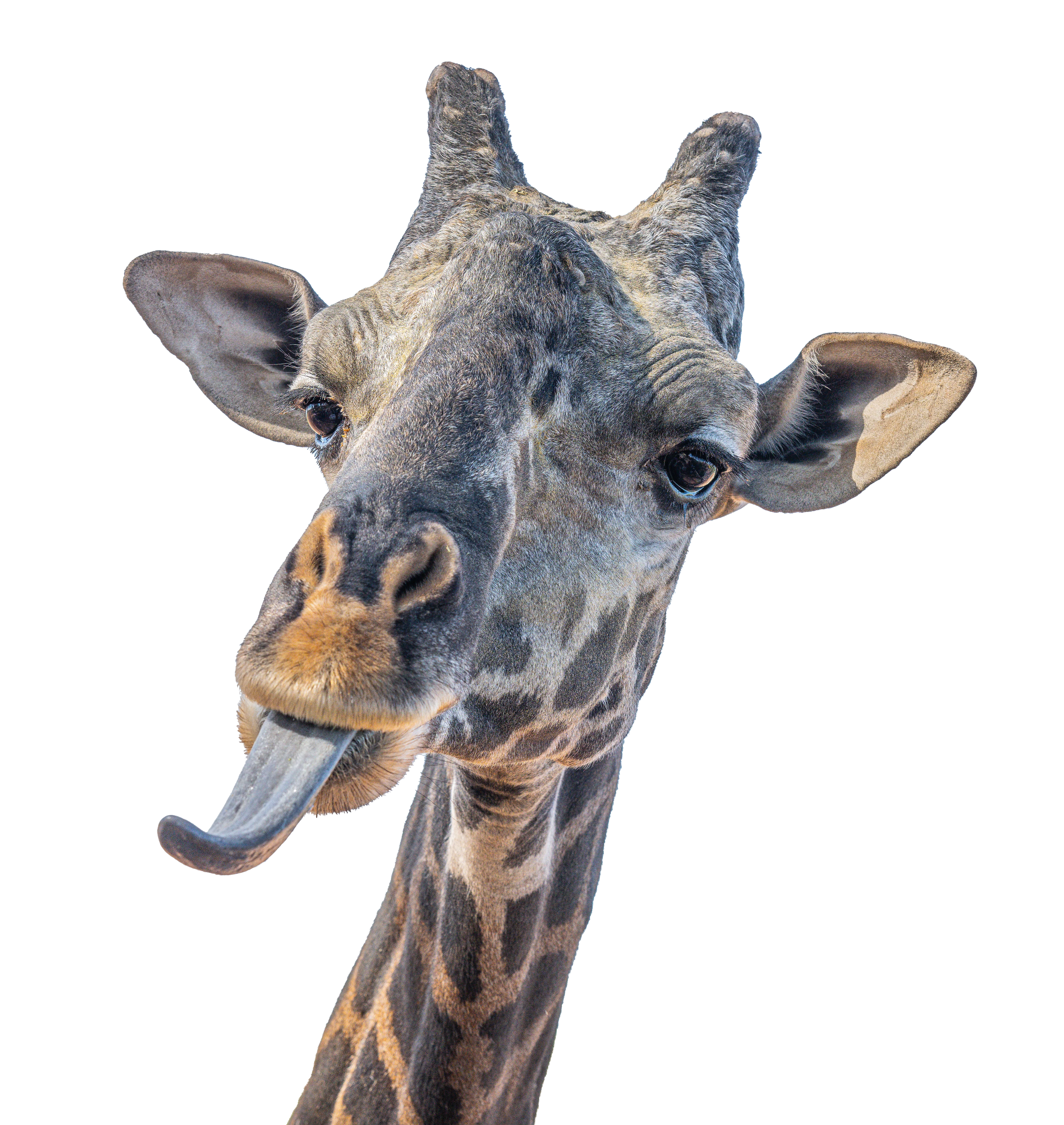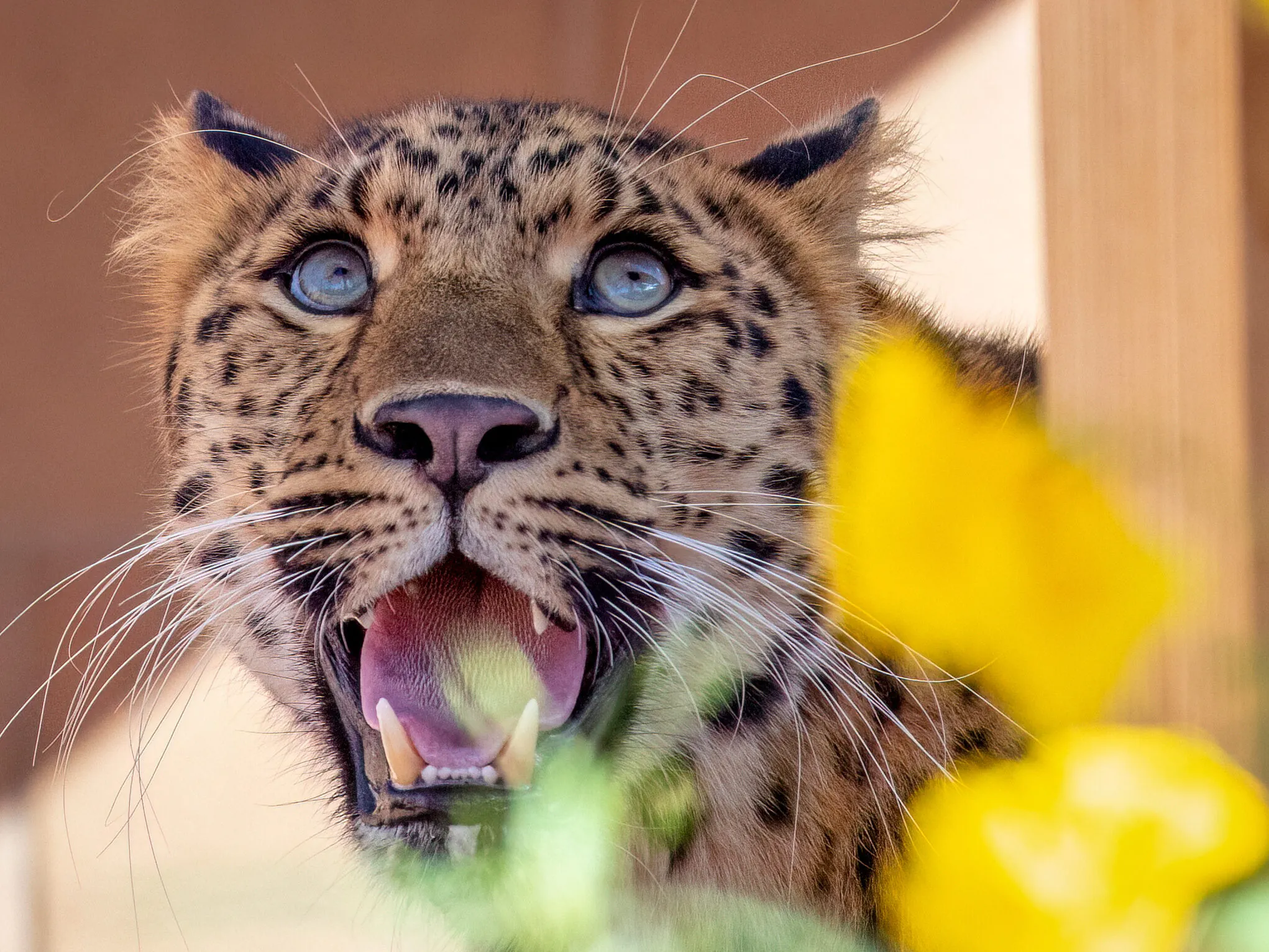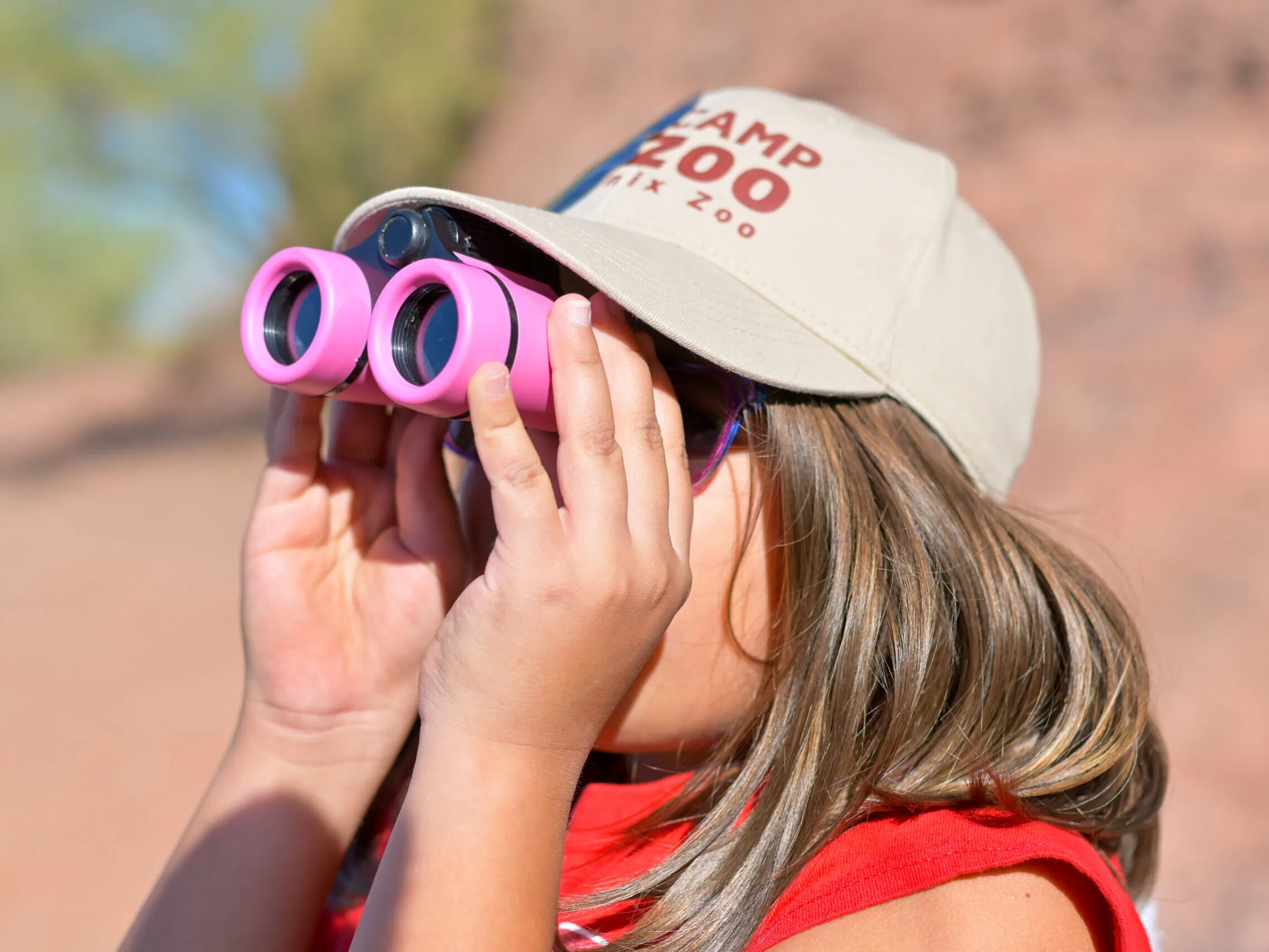Red river hog
Potamochoerus porcus
Adapted For Success
Named for their reddish coats and fondness for water, red river hogs come equipped with several useful features. The bold coloring on their faces helps them blend into their environment and avoid predators. Long whiskers, tufted ears and a mane that runs the length of the spine help them appear larger to predators or rival red river hogs. Teeth that extend into sharp tusks are used when rooting for food, in self-defense and for marking territory by scraping trees. Males also have two large facial warts to protect their snouts from the tusks of other males during territorial clashes.
Sounds Good
Red river hogs typically live in groups of up to 20 individuals under a single dominant male. These groups, called sounders, avoid other groups by marking their territory with chemical scents and by scraping trees with their tusks. When two sounders come in contact, they will threaten each other and sometimes fight. Communication between individuals in a sounder includes a variety of squeaks and squeals.
Piglets!
Piglets, also known as shoats, are usually born sometime between February and July, after a four-month gestation period. The female (sow) arranges a nest of dead leaves and grass and gives birth one to six piglets, each weighing less than two pounds, while the male (boar) provides protection. The piglets are dark brown with yellow stripes and spots. At six months, their coats turn red, and they lose their stripes and spots. At two years old they have their facial markings, and by three they are considered adults.

Diet: plants, carrion, small animals
Zoo Diet: alfalfa hay, formulated pellets, veggies
Habitat: forests, savannas, swamps
Weight: 99 – 264 lbs

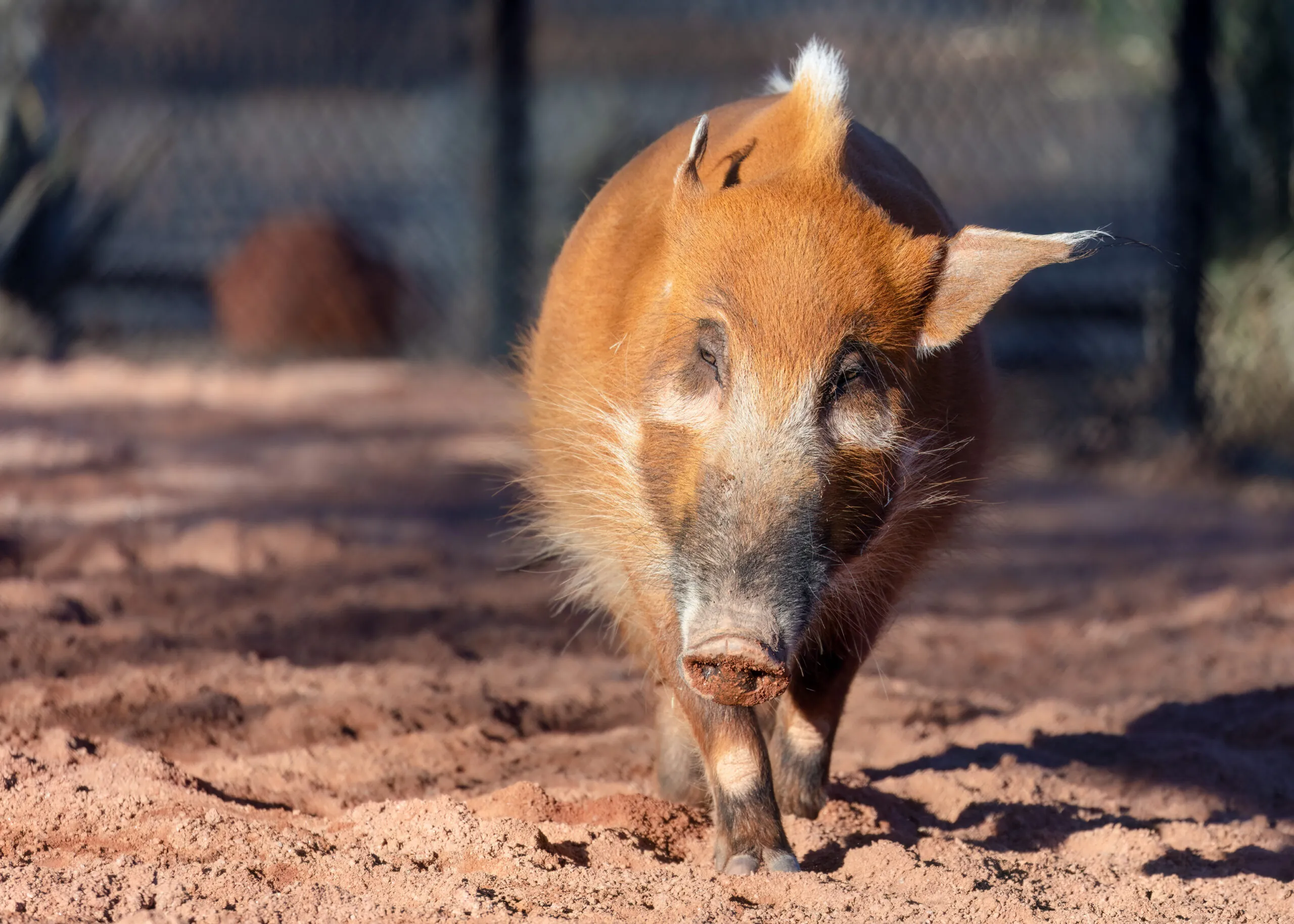
Plan your visit today!
The Phoenix Zoo is one of the largest non-profit zoos in the U.S., caring for over 3,000 animals, with nearly 400 species represented, including many threatened/endangered species.
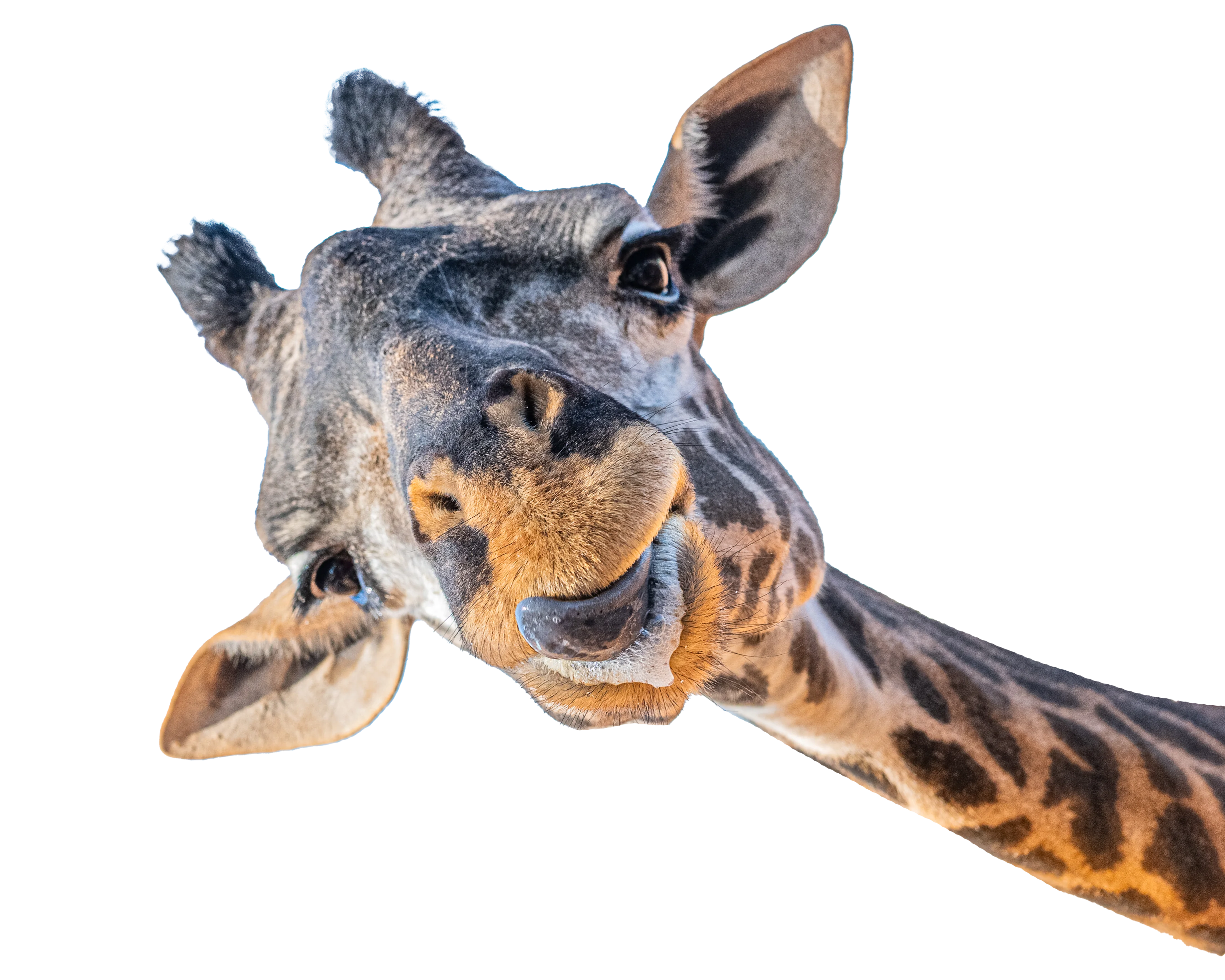
Plan your visit today!
The Phoenix Zoo is one of the largest non-profit zoos in the U.S., caring for over 3,000 animals, with nearly 400 species represented, including many threatened/endangered species.
